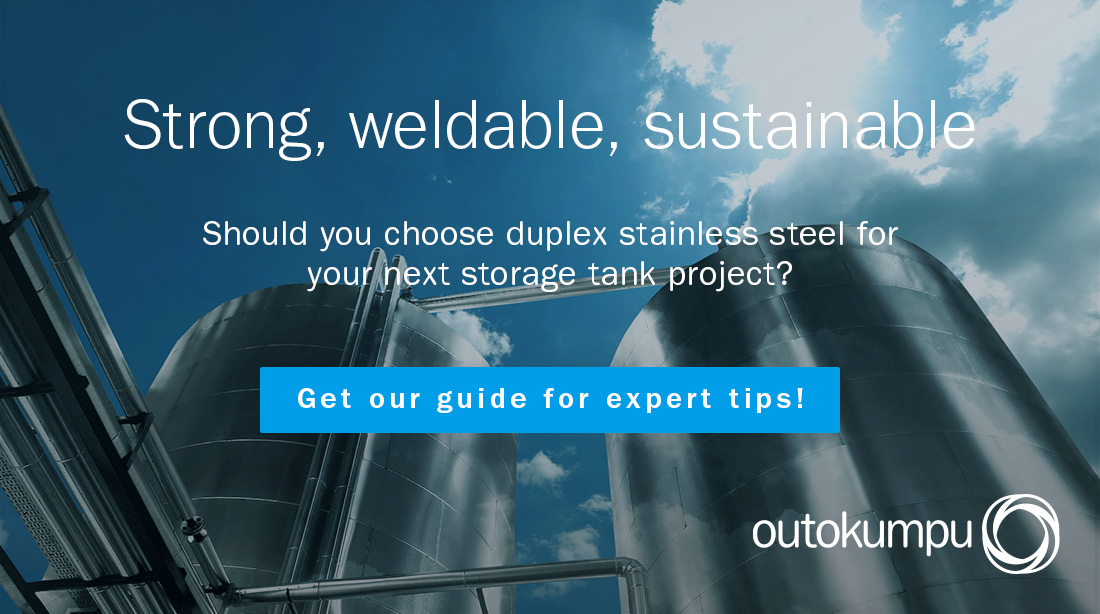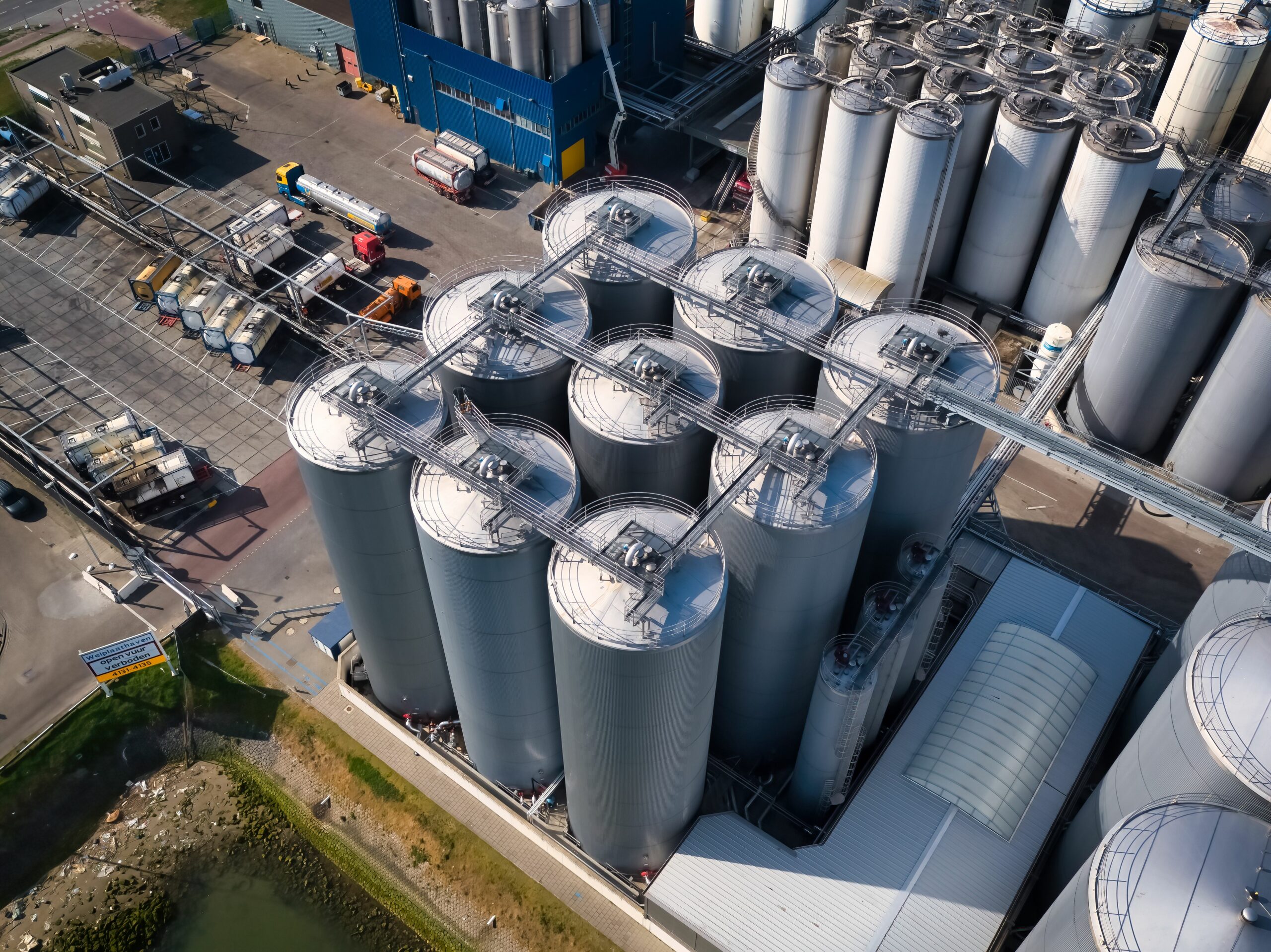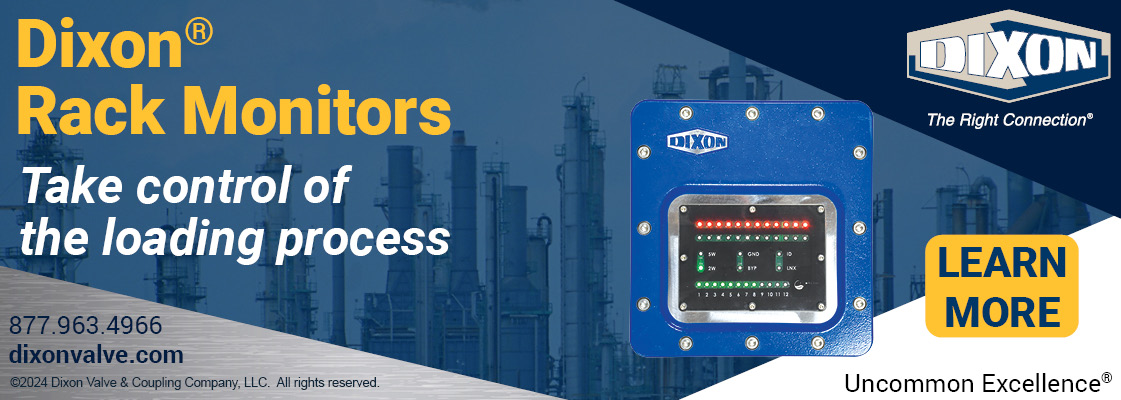High-strength duplex stainless steel has often been used to enable the design of thinner walls in lower sections of tanks. However, recent trends in the metal markets mean that it may now make economic sense to use a duplex grade for entire tanks. Paul Gruijters, Sales Manager from Outokumpu explains why this was the case for Maastank in Rotterdam.
Stainless steel was the only type of material to be considered by Maastank when it was planning to extend its storage terminal. Stainless steel has excellent corrosion resistance that meets the high standards for food protection when storing edible oils as it does not interact with the oils. In addition, it resists corrosion from rust in the saline coastal location, providing a long and low-maintenance life.
As a bulk storage leasing company, Maastank plans over the long term. It stores edible oils, food and feed products on behalf of food traders, producers and the biofuel industry. Building a tank terminal with a life of 60 years or more, it will rely on the stainless steel tanks to provide flexibility to store a wide range of products.
Commenting on the project Marijn Kuiper, MD of Maastank said: “When planning new tanks at our facility at the Port of Rotterdam, we only considered stainless steel. It is very sustainable as it gives us flexibility to store a wide range of products over a long life of 40–60-years. However, because the material does not react with the products, there’s virtually no end to the lifetime that we can expect.”
Choice of stainless steel also influences the lifetime operating cost of a tank as its corrosion resistance also reduces maintenance costs compared with mild steel. Because it withstands long-term exposure to chemicals, it is less likely to rust. Therefore, the tank operator can extend maintenance intervals.
It’s likely that a mild steel tank would need to come out of operation every five or ten years for inspection and maintenance. This requires complete draining down and cleaning, followed by inspection and repair of the tank liner and corroded sections. A tank may be out of operation for a week. In addition, maintenance costs for a mild steel tank tend to start rising significantly after around 40 years. For oil storage tanks, corrosion tends to initiate on the plates that make the tank floor, as residual water tends to gather underneath the oil.
In comparison, a stainless steel tank may only need inspection once every 15 years, and the inherent corrosion resistance means that less maintenance is needed as the plates withstand the corrosivity for longer.
Duplex stainless steel
For many years, tank builders have focused on the stainless steel grades of 304 and 316 for the majority of storage tanks. These are well known to the industry, fabricators are used to working with them and they are often available with a short lead time as they are typically stocked by steel distributors in the format of coil, sheet and plate.
Duplex grade such as Outokumpu Forta DX 2205 have also been used widely for storage tanks but until recently, these were only used in areas where the tank designer wants to make use of a high-strength material to reduce wall thickness.
The high strength of duplex stainless steel is due to a different microstructure to austenitic grades like 304 and 316 and to the addition of nitrogen. At a microscopic level, the atoms in all types of steel and iron are arranged in one of three ways: ferritic, austenitic and martensitic, with the first two being most common.
Ferritic steels have a structure that is based on a cube, with an atom at each corner and one in the centre of its body. Austenitic stainless steels are also based on a cube, but with an extra atom on each face. There are types of stainless steel with each of these structures.
The difference for duplex stainless steel is that it includes both the ferritic and austenitic structures. This gives it the best of both worlds: high strength and corrosion resistance that comes with the addition of chromium, molybdenum and nitrogen.
High-strength material saves costs
High yield strength is attractive for builders of storage tanks, as it enables them to design walls that are thinner with no loss of load-carrying capacity. Therefore, they can save costs by ordering less material.
Tank walls are designed as rings of plates. As a tank gets higher, the rings at the bottom need to be thicker to withstand the high hydrostatic pressure of liquid stored inside the tank, whereas the uppermost rings can be thinner. Not only would this reduce the weight of stainless steel required for a project, it’s also less costly to lift and handle the thinner plates as they’re not as heavy. Fabricators can also save on welding costs as it’s faster to weld thinner plate and requires less welding filler materials.
Therefore, until around 2019, it made commercial sense for tank builders to use duplex stainless steel for thickest sections of wall towards the bottom of the tank.
The influence of the nickel market
The other commercial aspect for pricing a project in stainless steel is the type and quantity of alloys in a particular grade. These influence the microsctructure as well as the cost. Typically, grades with lower levels of high-value alloying elements are known as lean alloys.
Recent trends on the nickel market in particular have changed the cost calculations for tank builders. Duplex stainless steel now makes financial sense for fabricating the entire tank, rather than just walls thicker than 6mm.
This is due to the level of nickel in the alloys. The popular grades of 304 and 316 contain 8% and 11% nickel, whereas Forta DX 2205 has only 5.7%, making it leaner and enabling tank builders to control costs by decoupling their projects from price variability on the nickel market.
When Maastank wanted to extend its facility in Rotterdam by a total of 16,700 m3, it appointed tank builder GPi Tanks XL to deliver nine new storage tanks 27.5 m high and ranging in capacity between 1,620 m3 and 2150 m3
Speaking about the project, Enzo Panella, Sales Director for GPi Tanks XL, said: “Maastank’s new tanks are in the sweet spot for the capacity used for storage of edible oils. Once a customer gives us their outline requirements, we make the sizing calculations before evaluating and ordering material. For this project, we chose Outokumpu’s Forta DX 2205 duplex stainless steel instead of the well-known stainless steel 304 or 316 grades. This was primarily for commercial reasons but also because it has good chemical resistance.”
Cutting carbon footprint
A further benefit of the high-strength duplex stainless steel and reducing the order size was that Maastank was able to reduce the project’s carbon footprint.
Ordering less steel overall is an important sustainability benefit. Stainless steel production is energy-intensive and therefore requires a significant amount of CO2 emissions. Therefore, by using a high-strength grade to reduce the order size, a fabricator can significantly cut a project’s carbon footprint.
In addition, GPi Tanks XL further reduced the carbon footprint by choosing Outokumpu as its supplier. Two stainless steel products can appear completely identical in terms of mechanical properties, corrosion resistance and dimensions. However, their carbon footprint may be drastically different. That is because production processes, energy efficiency practice and procurement activities may all differ and can have a significant influence on the environment.
Perhaps the single factor with the biggest impact on carbon footprint is use of recycled scrap material. Outokumpu stainless steel is made of over 90 percent recycled raw material. It uses less energy to remelt existing steel than it does to process virgin raw ores, therefore the carbon footprint of its stainless steel is significantly lower than the global average. In addition, it have further cut its carbon footprint over the long term with a program of energy-saving measures and by using electricity at its sites that has been generated using low-carbon technology such as hydropower.
According to Marijn, sustainability is becoming more important for tank terminals. He said: “Our customers are extremely interested in our carbon footprint and the downstream impact it has on their products. Therefore, we are always looking at ways to reduce our carbon footprint, particularly in heated storage tanks that use heating coils to control the viscosity of oil.
“It’s important for us to look at the whole lifecycle of our tanks and find ways to reduce carbon footprint. Stainless steel is a very attractive material because of its durability and duplex grades are particularly appealing as they keep order sizes down. That’s good for our sustainability, as well as our competitiveness over a long life of 60+ years.”
For more information visit www.outokumpu.com





























